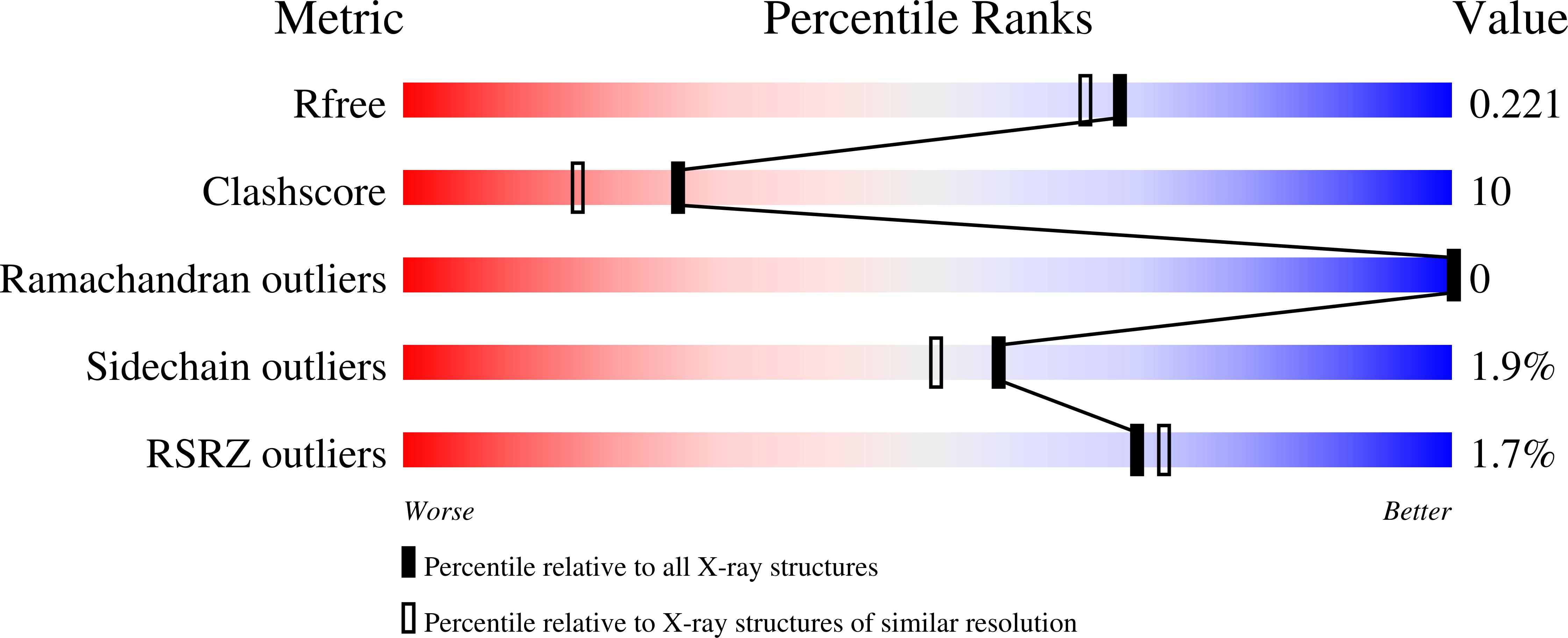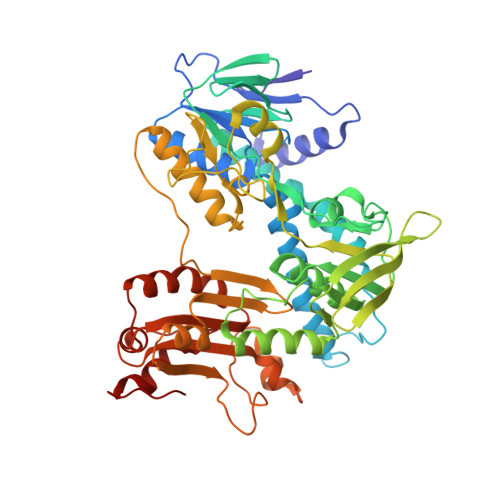Structural basis for carbon dioxide binding by 2-ketopropyl coenzyme M oxidoreductase/carboxylase.
Pandey, A.S., Mulder, D.W., Ensign, S.A., Peters, J.W.(2011) FEBS Lett 585: 459-464
- PubMed: 21192936
- DOI: https://doi.org/10.1016/j.febslet.2010.12.035
- Primary Citation of Related Structures:
3Q6J - PubMed Abstract:
The structure of 2-ketopropyl coenzyme M oxidoreductase/carboxylase (2-KPCC) has been determined in a state in which CO(2) is observed providing insights into the mechanism of carboxylation. In the substrate encapsulated state of the enzyme, CO(2) is bound at the base of a narrow hydrophobic substrate access channel. The base of the channel is demarcated by a transition from a hydrophobic to hydrophilic environment where CO(2) is located in position for attack on the carbanion of the ketopropyl group of the substrate to ultimately produce acetoacetate. This binding mode effectively discriminates against H(2)O and prevents protonation of the ketopropyl leaving group.
Organizational Affiliation:
Department of Chemistry and Biochemistry, Montana State University, Bozeman, MT 59717, USA.






















